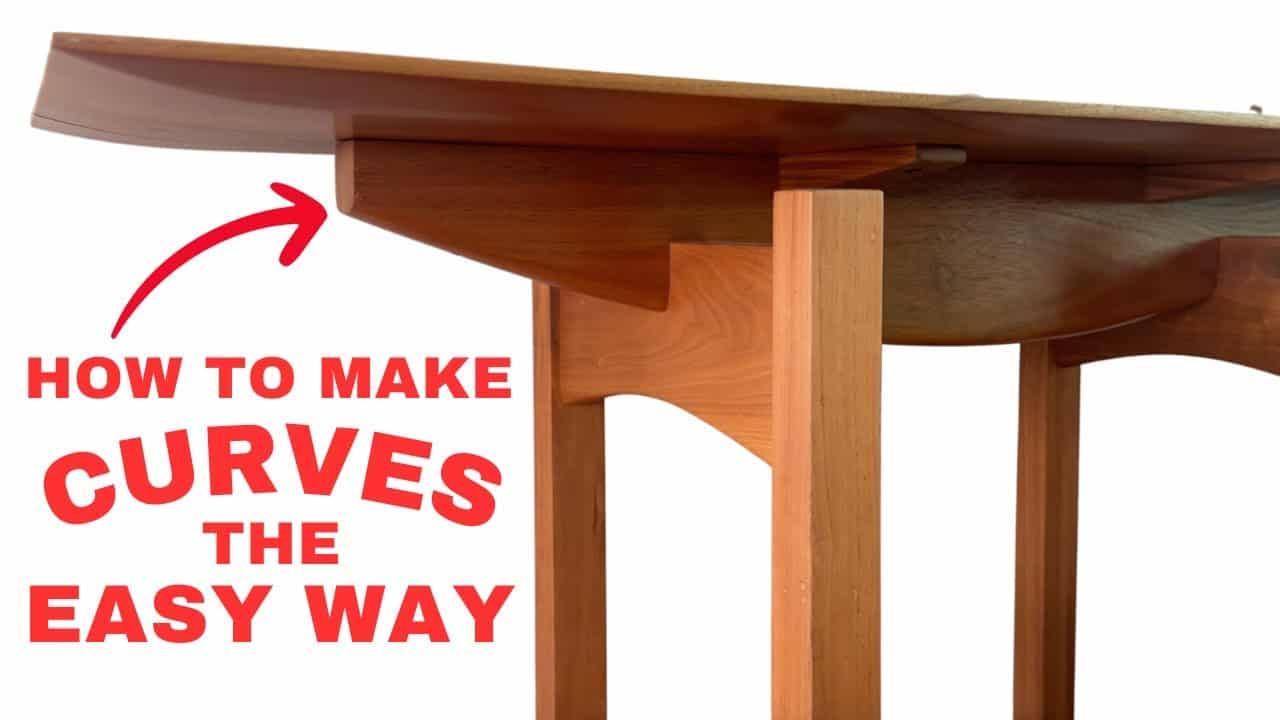Jeff and Jon from Today’s Craftsmen shared the woodworking tip featured in this video.
This short demonstration shows a simple workflow for laying out, templating, and trimming a gentle curve in a table apron or similar part without complex jigs.
The method relies on a temporary thin template glued to the workpiece, rough cutting, and then flush-trimming with a bearing-guided router bit.
Watch the full video and subscribe to Today’s Craftsmen:
Planning the Curve
Start by deciding how pronounced the curve should be and where the apex will sit on the part; simple layout marks are enough to establish the shape. Jeff suggests tools like a drawing bow for adjustable radii, but a freehand or measured layout works perfectly for many furniture-style curves.
Making and Attaching a Temporary Template
The technique uses a thin piece of MDF temporarily glued to the face of the workpiece to serve as the router guide rather than cutting directly from finished stock.
Jeff secures the template with small dabs of CA glue for instant tack and a little hot glue on the back to reinforce the hold while keeping cleanup manageable.
Rough Cutting and Router Trimming
After the template is attached, the profile is rough-cut on a bandsaw leaving a small allowance for trimming to the template line. The final cleanup is done with a bearing-guided router bit that references the template edge and produces a smooth, even curve.
Workholding and Bit Selection
Good workholding matters: small routers and bits can be tipped when heavy material is trimmed, so use a stiffer setup or a larger-diameter cutter if you are removing a lot of waste.
Jeff points out a practical alternative is to cut a thin template first, then use that template to trim the final material so the router only removes a small amount at the end.
Cleanup and Finishing Touches
Removing the template may require a chisel or light sanding depending on the adhesive and template material, and surfers of rough spots can be smoothed quickly with an orbital or palm sander. The approach yields an even, fair curve that requires minimal hand work once the routing is properly executed.
Why This Method Helps
This workflow is fast, repeatable, and adaptable for aprons, rails, and other parts where a subtle bow improves the design language of a piece.
It also makes batch work easier since a single template can be reused for multiple parts, and the basic idea scales whether working in hardwoods or more delicate materials.
Practical Tips and Adaptations
Consider making the template from a material that trims easily if you plan to use it repeatedly, and always leave a small margin when rough-cutting to avoid overloading your router bit.
If precision is critical, improve clamps or use a larger router and bit to reduce deflection during trimming.
The method demonstrated by Jeff and Jon is a reliable, low-complexity way to cut smooth, fair curves without elaborate tooling, and it can be adapted to many furniture projects where subtle shaping makes a big visual difference.
For a visual walkthrough and to subscribe, watch the full video and subscribe to Today’s Craftsmen:
